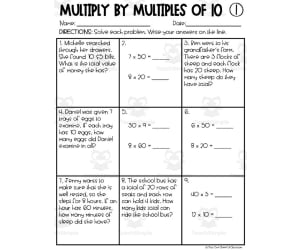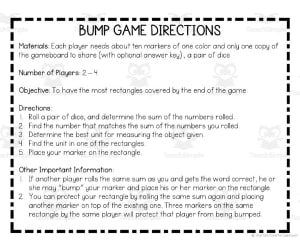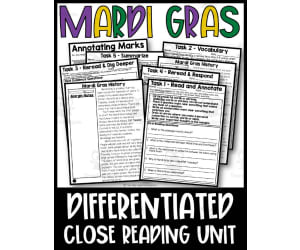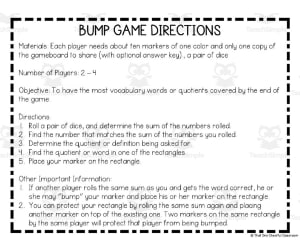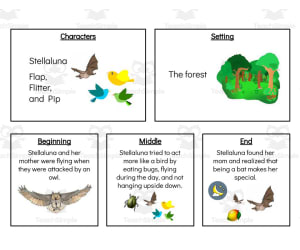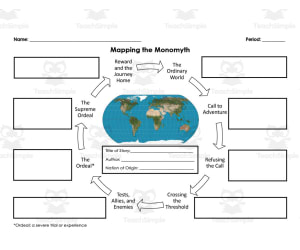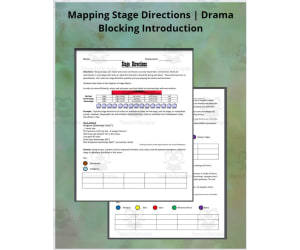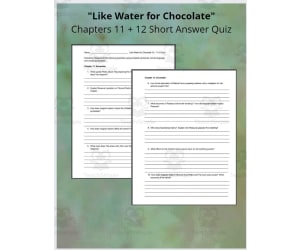2,829 products added recently
Page 1067 - Newest Teaching Resources
Adding Giants Photoshop Activity
Science, Technology, Grade 7, 8, 9, 10, Activities
Students will work with digital tools in the Adding Giants Photoshop Activity . Students will add an image into the background to make them appear as giants. Step by step directions are included.
Author OK Products
Tags Adding Giants, Photoshop, Technology, Graphics, Graphic Design, Design Concepts, Mobile Applications, Photopea
City Under Water Photoshop Activity
Science, Technology, Grade 7, 8, 9, 10, Activities
Students will work with digital tools in the City Under Water Photoshop Activity . Students will bring together several existing things into one unique scene. Step by step directions are included.
Author OK Products
Tags Science Activity, Technology, Digital Lesson, Computer Science, City Under Water, Photoshop, Photopea, Mobile Applications, Graphic Design
Penguin Unit Study (Arctic Animals Lesson Plan, Videos, Activities)
Science, Life Sciences, Animals, Grade 1, 2, 3, Lesson Plans, Teacher Tools
This 5-day NO PREP penguin unit study teaches students about the amazing arctic animals. Through reading passages, videos, worksheets, activities, and more, young learners will discover facts about penguin appearance, habitat, reproduction, predators, diet, and conservation. The multi-subject lessons integrate science, reading, writing, art, and grammar at a first through third grade level. Use the flexible materials for whole group instruction, centers , or homework. Easily customize content to match student ages, needs, and learning styles. Overall, an engaging penguin-themed resource that makes a great addition to any arctic animals or winter unit.
Author Heather Huhman
Tags Penguin, Arctic Animals, Winter, Zoology, Science, North Pole, South Pole, Arctic, Unit Study, Antarctica, Arctic Animals Penguin
Add Falling Snow Photoshop Activity
Science, Technology, Grade 7, 8, 9, 10, Activities
Students will work with digital tools in the Add Falling Snow Photoshop Activity . Students will take an ordinary wintery shot and add falling snow to it. Step by step directions are included.
Author OK Products
Tags Computer Science, Technology, Photoshop, Photopea, Mobile Applications, Graphic, Design, Design Concepts, Snow, Winter
Animal Skin Swap Photoshop Activity
Science, Technology, Grade 7, 8, 9, 10, Activities
Students will work with digital tools in the Animal Skin Swap Photoshop Activity . Students will take the skin of one animal and morph it so it fits onto another animal's body. Step by step directions are included.
Author OK Products
Tags Technology, Digital, Graphic, Design, Concepts, Animals, Science Activity, Computer Lesson, Computer Science, Small Group
Creative Writing Prompts (Magic Potions and Spells Edition)
ELA, Writing, Creative Writing, Grade 2, 3, 4, Writing Prompts, Worksheets & Printables
Magic potions and spells-themed creative writing activity that is a LOW PREP interactive addition to your writing lessons -- or magic or Halloween unit study. This resource includes magic powers cards, creative writing graphic organizers, writing rubrics, and more. Perfect for second grade, third grade, and fourth grade classrooms, homeschool families, and cooperatives. After printing the cards (4,950 unique combinations of the 100 magical powers), select which graphic organizers you would like students to use, review the rubric with them, and send them off to write. This can be done individually or in small groups so they can bounce ideas off of one another. Students will submit their finished creative writing for teacher assessment .
Author Heather Huhman
Tags Creative Writing, Magic, Magic Potions, Magic Spells, Writing, Halloween, Magic Potions And Spells, Magical Writing Prompts
Mythical Creatures Writing Craftivity (Create Your Own Mythical Creature)
ELA, Writing, Grade 1, 2, 3, Activities
Mythical Creatures Writing Craftivity Resource This educational tool is versatile, offering educators the ability to adapt it for a range of settings including classroom instruction, small group work or even as homework assignments. Suitable for grades 1 through 3 - ideal for incorporating into magic-themed studies or Halloween-style learning units. Main Components Mythical creature booklets: These provide key details about physical traits (head, ears, eyes, mouth etc.), habitat and lifestyle habits alongside magical powers. Students create detailed descriptions of their own unique mythical creatures. Magic power cards: Each student gets two distinct powers which they integrate while describing their creatures using both text and illustrations in the provided booklet. Craftive Collaborative Process The process incorporate collaboration – students swap booklets and draw images based on descriptions offered by their counterparts. Post this process; partners exchange drawings to check replication accuracy — promoting communication skills alongside creativity. Few Reasons to Appreciate This Material: Showcases student creativity & enhances research abilities; Hones grammar skills through descriptive writing exercises; Presents concepts from ideation stage till drafting visual representations; All under an accessible, printer-friendly format that's reusable. Note: This education material is available only for personal or classroom use unless multiple licenses are purchased. +p>Please contact us for any queries regarding this product as returns/refunds are not offered.
Author Heather Huhman
Tags Mythical Creatures, Writing Craftivity, Fictional Characters, Creative Writing, Descriptive Writing
Alien Project Photoshop Activity
Science, Technology, Grade 7, 8, 9, 10, Projects, Activities
Students will work with digital tools in the Alien Project Photoshop Activity. Students will turn a normal photo of themselves into a freaky photo of an alien. Step by step directions are included.
Author OK Products
Tags Photoshop, Photopea, Mobile Applications, Technology, Computer Science, Computer Project, Science, Graphic Design, Aliens, Alien Photoshop
Adding A Rainbow Photoshop Activity
Science, Technology, Grade 7, 8, 9, 10, Activities
Students will work with digital tools in the Adding a Rainbow Photoshop Activity . Students will add a simple rainbow into a picture. Step by step directions are included.
Author OK Products
Tags Adding A Rainbow, Photoshop, Mobile Applications, Graphics, Design Concepts, Backgrounds, Photopea, Technology, Science Activity
Powers of 10 Scavenger Hunt
Math, Multiplication and Division, Division, Grade 5, Activities
This is a Powers of 10 Scavenger Hunt. This activity was designed with your 5th grade students in mind. It will provide students with 12 problems that will allow them to apply their knowledge of solving multiplying by powers of 10 equations. Answer key included.
Author That One Cheerful Classroom
Tags Scavenger Hunt, Task Cards, Flash Cards, Powers Of 10, Exponents, Equations, Multiplication, Multiplying, Math Stations, Small Group, Powers Of 10 Games
Time to the Nearest Minute Kaboom Game
Math, Time, Grade 3, Activities, Games
This is a Time to the Nearest Minute Kaboom Game. Students will enjoy reviewing math concepts with this engaging game. Directions are included for how to assemble and play.
Author That One Cheerful Classroom
Tags Nearest Minute, Telling Time, Time Games, Math Games, Kaboom, Task Cards, Math Centers, Measurement, Analog Clock
National Pizza Month Close Reading
ELA, Reading, Grade 2, 3, 4, 5, Worksheets & Printables, Worksheets
This is a National Pizza Month Close Reading. Within this packet, students will have 5 tasks to complete. As they read, they will dig deeper by annotating, finding powerful words, etc. Students will complete graphic organizers and summarize through writing. Answer key included.
Author That One Cheerful Classroom
Tags Close Reading, Graphic Organizers, Reading Passage, Nonfiction Passage, Comprehension, Vocabulary, Summarizing, Italy, October
Multiply by Multiples of 10 Homework Worksheets
Math, Multiplication and Division, Division, Grade 3, Worksheets & Printables, Worksheets
These are Multiply by Multiples of 10 - Homework Worksheets . There are 4 pages included. Each page has 9 problems on it. These are great to assign for homework. Answer keys included.
Author That One Cheerful Classroom
Tags Homework, Multiply, Multiples Of 10, Math Facts, Fact Fluency, Computation, Math Worksheets, Word Problems, Assessments, Multiply Multiples Of 10 Worksheet, Multiplying Multiples Of 10 Worksheet
Multiplication Facts Bump Game
Math, Multiplication and Division, Division, Grade 3, Activities, Games
This is a Multiplication Facts Bump Game. This will cover 3's - 12's while also exploring vocabulary related to multiplication. Your math students are sure to enjoy this game. Directions and answer keys are included.
Author That One Cheerful Classroom
Tags Mental Math, Multiplication, Math Facts, Fact Fluency, Bump Game, Math Games, Small Group, Computation, Division
Measurement Bump Games
Math, Measurements, Grade 3, 4, 5, Activities, Games
These are Measurement Bump Games . There are 2 games included - 1 for mass and 1 for liquid volume. Directions are included on how to play bump games .
Author That One Cheerful Classroom
Tags Measurement, Volume, Mass, Liquid, Bump Games, Small Group, Whole Group Math, Math Centers, Vocabulary
Mardi Gras Close Reading Packet
ELA, Reading, Grade 3, 4, 5, Worksheets & Printables, Worksheets
This is a Mardi Gras Close Reading Packet. Students will analyze vocabulary and text evidence while they annotate and dig deeper. These worksheets are a great way to teach students more about this holiday while building their reading, writing and comprehension skills. Answer keys included.
Author That One Cheerful Classroom
Tags Close Reading, Vocabulary, Comprehension, Annotate, Mardi Gras, May, Summer, Graphic Organizers, Nonfiction Article
Division Bump Games
Math, Multiplication and Division, Multiplication, Grade 3, 4, Activities, Games
Product Title: Division Bump Games The Division Bump Games is a vital educational resource, perfect for educators ranging from public school teachers to homeschoolers. This 25-page PDF document encompasses a series of math-based games curated carefully to review division in an engaging and interactive way. The games are most suitable for students at Grade 3 and Grade 4. Division, being one of the key foundational concepts in mathematics,, can be internalized more meaningfully by children when taught through play-based learning. Through these games, students can practice applying their understanding of division and also improve numeracy skills. A remarkable feature about the Division Bump Games is that there are clear instructions on how to play each game making them easily operational by any educationist or home teacher. These can be used during whole-group instruction time as an active method for reviewing class material, split into smaller groups for targeted peer-to-peer learning sessions or given as home assignments which make home-learning enjoyable. The benefit here is its high level of adaptability. You will find levels of difficulty within the collection differ, therefore making it significantly workable with varying student abilities. With its strong focus on scalability this set merges seamlessly with standard curriculum requirements . In conclusion If you’re aiming for strengthening understanding and fluency in division among your students using fun-filled activities—you might just have found what you're looking for! This set pdf format Division Bump Games blends playful competition along with conceptual clarity setting up strong foundations toward higher mathematical proficiency within Math not just abstract concepts but relatable applications thereby setting up strong foundations towards higher mathematical competency.
Author That One Cheerful Classroom
Tags Division Games, Math Activities, Interactive Learning, Numeracy Skills, Play-based Education, Bump Game, The Bump Game, 3rd Grade Division Games, Bump Bump Bump Game, Division Games 3rd Grade
Stellaluna Sequencing Assessment
ELA, Reading, Kindergarten, Preschool, Grade 1, Teacher Tools, Assessments
This is a Stellaluna Sequencing Assessment. There are 2 different tests included. All you have to do is print and go.
Author ELA Resources
Tags Sequencing, Sequence Of Events, Stellaluna, Reading, Literature, Literacy Station, Reading Center, Bat Story, Story Elements
Stellaluna Sorting Mat
ELA, Reading, Kindergarten, Preschool, Grade 1, Activities
This is a Stellaluna Sorting Mat. Your little learners will use this mat to sort the elements of the story. They will determine the characters, setting and plot.
Author ELA Resources
Tags Stellaluna, Bats, Preschool, Sorting Mat, Character Cards, Story Elements, Setting, Literacy, Stations, Stellaluna Meaning
Build Prior Knowledge: Halloween 22
ELA, Reading, Grade 9, 10, 11,
Build Prior Knowledge: Halloween 22 The Build Prior Knowledge: Halloween 22 is a comprehensive teaching aid aimed towards boosting the understanding and awareness of students about the rich history and folklore of Halloween. Specifically designed to cater to the educational needs of 9th, 10th, and 11th graders, it places significant emphasis on Language Arts, particularly Reading. The tool integrates visually stimulating graphics with an interactive image detailing different aspects related to vampires and Halloween – offering students intriguing insights in an engaging manner. Fitting For Various Classroom Setups This invaluable resource extends its pedagogical benefits beyond traditional classroom setups by acting as an excellent guide for substitute-led instruction. It can be adapted easily to suit various usage scenarios, from conducting engaged group learning sessions to assigning individual lessons. Knowledge Enhancement Activity Promoting curiosity among students while developing their critical reading skills is made possible through this knowledge enhancement activity. To facilitate this effectively, our product supports multiple file types ensuring easy access across various platforms. Halloween Comes Alive! Fives well-researched articles about vampires and Halloweens are part of this experience allowing students a deep-dive into these topics. An opportunity for virtual exploration of locations mentioned in these articles via Google Earth presentations within one click! Included additional links stimulate conversations about this iconic festival on relevant websites offering more expansive knowledge. An embedded quiz set functions not only as an effective evaluation tool but also strengthens recall mechanisms among learners. In essence, resources such as these transform passive listeners into active learners – making every lesson memorable while enhancing literary comprehension capabilities way above standard expectations. Truly positioning educators in command over how this fascinating topic is best conveyed – informed, flexible and greatly engaging!
Author A+ Educational Services
Tags Halloween, Folklore, Vampires, Interactive Learning, Reading Comprehension
Shakespeare Sonnets Double Entry Journals
ELA, Literature, Grade 10, 11, 12, Worksheets & Printables, Worksheets
This is a set of Shakespeare Sonnets Double Entry Journals. There are 10 pages of journals - one sonnet per page. All you have to do is print and go. These journals are a great way for students to respond.
Author ELA Resources
Tags Literature, Shakespeare, Drama, Sonnets, Asssessments, Reading, Comprehension, Writing Prompts, Double Entry Journals, Macbeth
Mapping the Monomyth Graphic Organizer
Social Studies, History, History: Ancient, Grade 11, 12, Teacher Tools, Graphic Organizers
This is a 1-page printable with a Mapping the Monomyth Graphic Organizer . All you have to do is print and go.
Author ELA Resources
Tags Mapping The Monomyth, Journey, Mythology, Ancient, Greek, Social Studies, History, Ancient History, Graphic Organizer
Mapping Stage Directions | Drama Blocking Introduction
Creative Arts, Art, Drama, Grade 10, 11, 12, Worksheets & Printables, Worksheets
This is a Mapping Stage Directions Drama Blocking Introduction. It is a 2-page printable that will teach your students about this drama technique.
Author ELA Resources
Tags Drama Class, Drama Blocking, Art, Stage Directions, Theatre, High School, Graphic Organizer, Flow Chart, Organization, Blocking In A Play, Stage Directions Diagram, Blocking Theater
"Like Water for Chocolate" Chapters 11 + 12 Short Answer Quiz
ELA, Literature, Grade 11, 12, Quizzes, Quizzes and Tests, Teacher Tools
The "Like Water for Chocolate" Chapter 11 + 12 Short Answer Quiz is a 2-page printable. When your students finish the chapters, you can administer the quiz to assess their comprehension.
Author ELA Resources
Tags Literature, Novel Study, Assessments, Short Answer Quiz, Writing Prompts, Reading, Comprehension, Like Water For Chocolate, Romance Novel














